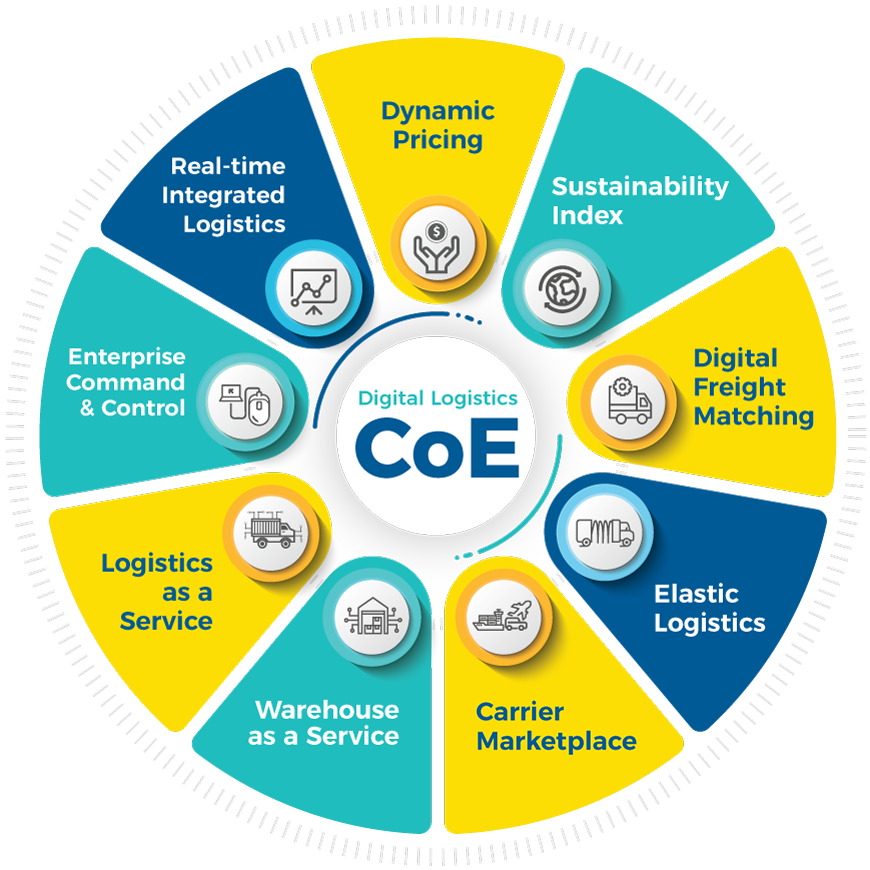Coe Trucks For Sale: A Comprehensive Buyer’s Guide types.truckstrend.com
Introduction: The Enduring Appeal of Cab-Over-Engine Trucks
In the vast landscape of automotive history, few vehicle designs possess the distinctive character and enduring allure of the Cab-Over-Engine (COE) truck. Defined by their unique configuration where the driver’s cab sits directly above the engine, COE trucks represent a fascinating blend of practical engineering and iconic aesthetics. From their utilitarian origins as space-saving workhorses to their modern-day status as highly coveted collector’s items and customization platforms, COE trucks offer a rich tapestry of history, functionality, and potential.
Coe Trucks For Sale: A Comprehensive Buyer’s Guide
For anyone venturing into the market of "Coe Trucks For Sale," whether for a restoration project, a unique business vehicle, a show truck, or simply a nostalgic piece of Americana, understanding their nuances is paramount. This comprehensive guide aims to demystify the world of COE trucks, offering insights into their history, types, buying considerations, and the vibrant community that cherishes them. Prepare to embark on a journey into the heart of a design that continues to capture imaginations and turn heads on roads worldwide.
Understanding COE Trucks: A Brief History and Design Philosophy
The concept of placing the driver’s cab over the engine emerged as a practical solution to several engineering challenges, primarily space efficiency and maneuverability. In the early to mid-20th century, as urban areas grew and goods needed to be transported more efficiently within confined spaces, traditional long-nosed trucks became cumbersome.
Key Design Advantages:
- Maneuverability: With a shorter overall length due to the engine’s placement, COEs excel in tight turning radii, making them ideal for city deliveries, construction sites, and congested depots.
- Payload Distribution: The weight of the engine and cab being further forward often allows for better weight distribution across the axles, potentially increasing legal payload capacity, especially on shorter wheelbases.
- Visibility (Early Designs): In some early models, the elevated driving position offered a commanding view of the road directly in front of the truck.
- Shorter Wheelbase: This contributes to the maneuverability and can allow for larger trailers within legal length limits for tractor-trailer configurations.

Evolution and Decline:
COE trucks dominated the trucking industry from the 1950s through the 1980s, particularly in North America where strict overall length regulations encouraged their compact design. Iconic manufacturers like Ford (C-series), Chevrolet (Tilt Cab), International Harvester, Kenworth (K100), Peterbilt (352, 362), Freightliner, and Mack all produced popular COE models. However, changes in federal length laws in the late 1970s and early 1980s, which removed restrictions on overall tractor-trailer length, gradually reduced the incentive for manufacturers to produce COEs. Furthermore, conventional trucks began offering better ride quality, easier engine access, and perceived safety advantages in frontal collisions, leading to the decline of new COE production in North America by the late 1990s. Despite this, they remain prevalent in Europe, Asia, and other parts of the world dueor their continued practical advantages in dense urban environments.
Why Buy a COE Truck? The Allure and Practicality
The decision to purchase a COE truck today is often driven by a blend of nostalgia, practicality, and a desire for uniqueness. These vehicles are far more than just transportation; they are canvases for creativity and symbols of a bygone era.
1. Collector’s Item and Nostalgia:
For many, COE trucks evoke a powerful sense of nostalgia. They represent a golden age of trucking and American industrial design. Restored COEs are popular at car and truck shows, drawing crowds with their distinctive looks and historical significance. Owning one is owning a piece of history.
2. Customization Platform:
Perhaps the most significant draw for modern buyers is the COE’s potential for customization. Their unique flat-fronted design lends itself incredibly well to:

- Hot Rods and Custom Builds: Shortened frames, lowered suspensions, and powerful modern engines transform them into head-turning street machines.
- Car Haulers: Their compact footprint makes them excellent foundations for custom car haulers, often with integrated beds for showcasing vehicles.
- RV Conversions: The spacious cab and robust chassis can be converted into unique motorhomes or expedition vehicles.
- Unique Work Trucks: From mobile workshops to specialized delivery vehicles, their versatility is unmatched.
3. Practical Workhorse (Niche Applications):
While not as common for long-haul as their conventional counterparts, some COE models still find practical use in specific applications. Their maneuverability remains valuable for:
- Urban Deliveries: Navigating tight city streets and loading docks.
- Specialized Equipment Hauling: Certain heavy-duty COEs are still favored for heavy equipment transport where overall length is a concern.
4. Investment Potential:
Like other classic vehicles, rare or well-restored COE trucks, especially iconic models from major manufacturers, can appreciate in value over time. They represent a tangible asset that combines passion with potential financial return.
Types of COE Trucks You’ll Find For Sale
The "Coe Trucks For Sale" market encompasses a wide variety of models, sizes, and conditions. Understanding these categories will help narrow your search.
1. Light-Duty and Medium-Duty COEs:
- Examples: Ford C-series (perhaps the most iconic and widely produced), Chevrolet Tilt Cab (L-series), Dodge LCF (Low Cab Forward), International Harvester Loadstar.
- Characteristics: Often used for local delivery, refuse collection, fire trucks, and utility services. They typically have gasoline engines, though diesel options were available. Easier to work on and find parts for than some heavy-duty models.
- Ideal for: Smaller custom builds, hot rods, unique business vehicles, or light work.
2. Heavy-Duty and Semi-Truck COEs:
- Examples: Kenworth K100, Peterbilt 352/362, Freightliner Cabovers, Mack F-series, International Transtar/Cabasaurus.
- Characteristics: Designed for long-haul trucking, heavy hauling, and severe-duty applications. Feature large diesel engines, robust drivetrains, and often sleeper cabs.
- Ideal for: Large custom RVs, heavy-duty car haulers, show trucks, or for those seeking a truly imposing vehicle.
3. Condition Categories:
- Project Trucks: Non-running, significant rust, missing parts. These are typically the cheapest but require the most time, money, and skill.
- Running/Driving Projects: Mechanically sound but need cosmetic work, interior restoration, or upgrades. A good starting point for a custom build.
- Partially Restored/Customized: Some work done, but not complete. Can be a good deal if the work aligns with your vision.
- Fully Restored/Show Quality: Immaculate condition, often with modern upgrades. These command the highest prices but offer immediate gratification.
Where to Find COE Trucks For Sale
The search for the perfect COE truck requires diligence and knowing where to look.
-
Online Marketplaces:
- eBay Motors: A wide variety of COEs, from projects to fully restored. Use specific keywords like "Ford C700," "Kenworth K100," "COE truck."
- Craigslist/Facebook Marketplace: Excellent for local finds, often from private sellers. Be prepared to travel for good deals.
- Specialized Classic Truck Websites: Sites like Hemmings, Old Iron, TruckPaper (for larger commercial vehicles), and classic truck forums often have classified sections.
- Facebook Groups: Numerous groups dedicated to specific COE models (e.g., "Ford C-Series Truck Owners," "K-Dub Club") are excellent for finding trucks and getting advice.
-
Auctions:
- Live Auctions (Mecum, Barrett-Jackson): For high-end, professionally restored, or custom COEs.
- Local/Estate/Farm Auctions: Can be treasure troves for forgotten project trucks, often at lower prices.
-
Specialized Dealers & Restorers:
- Some classic vehicle dealerships specialize in trucks.
- Restoration shops often have projects for sale or can source one for you.
-
Word of Mouth & Networking:
- Attending truck shows, joining classic truck clubs, and networking with enthusiasts can lead to hidden gems. Many sales happen within the community before ever being advertised publicly.
Important Considerations Before Buying a COE Truck
Purchasing a COE truck, especially an older one, is a significant undertaking. Careful consideration of these factors will save you headaches and expenses down the line.
1. Budget Realism:
The purchase price is often just the beginning. Factor in:
- Restoration Costs: Bodywork, paint, engine/drivetrain rebuilds, interior, electrical. This can easily run into tens of thousands, even hundreds of thousands for professional, show-quality work.
- Parts Availability: Some parts are readily available, others are extremely rare and expensive to source or custom fabricate.
- Transportation: Unless it’s a running, roadworthy vehicle, you’ll need to budget for flatbed towing or professional transport.
- Insurance and Registration: Specialized classic vehicle insurance might be required.
2. Thorough Condition Assessment:
This is critical. If you’re not mechanically inclined, hire an independent mechanic specializing in heavy trucks or vintage vehicles for a pre-purchase inspection.
- Rust: The biggest enemy. Check cab corners, floorboards, fender wells, door bottoms, and especially the frame rails. Surface rust is manageable; structural rust is a major red flag.
- Engine & Drivetrain: Does it run? Does it smoke? Are there leaks? Check the transmission, axles, and universal joints.
- Brakes: Often air brakes on heavy-duty models. Check air lines, chambers, and drums/discs.
- Electrical System: Often neglected and can be a wiring nightmare.
- Interior: Condition of seats, dash, gauges, and controls.
- Glass & Trim: Can be expensive or difficult to replace.
3. Intended Use:
Your purpose for the truck will dictate the ideal purchase.
- Show Truck: Requires a significant budget for meticulous restoration.
- Custom Build: Allows for more flexibility with engine swaps and modern components.
- Work Truck: Needs to be reliable, mechanically sound, and potentially updated for modern road conditions.
4. Parts Availability & Support:
Research common issues for the specific model you’re considering. Are there aftermarket suppliers? Are used parts available from salvage yards? Are there active online communities that share knowledge and sources?
5. Legal & Safety Considerations:
- Title & VIN: Ensure the vehicle has a clear title and the VIN matches.
- Emissions: If you plan an engine swap, be aware of local emissions regulations.
- Safety Upgrades: Older trucks often lack modern safety features (ABS, airbags, crumple zones). Plan for upgrades like modern brakes, steering, and lighting if you intend to drive it regularly.
Tips for a Successful COE Truck Purchase
- Do Your Homework: Research specific models, their pros, cons, and common issues. Understand the market value.
- Set a Realistic Budget: And then add 20-30% for unexpected expenses.
- Inspect, Inspect, Inspect: Never buy sight unseen if possible. If you can’t be there, get detailed photos, videos, and a third-party inspection.
- Ask Questions: Don’t be afraid to ask the seller about the truck’s history, maintenance records, and why they’re selling.
- Verify Documentation: Ensure the title is clear and transferable.
- Factor in Transportation: Get quotes for moving the truck before you commit to buying.
- Be Patient: The right COE truck for your needs and budget might not appear overnight.
Challenges and Solutions in COE Ownership
Owning and restoring a COE truck comes with unique challenges, but also rewarding solutions.
- Challenge: Extensive Rust:
- Solution: Professional body shops specializing in classic vehicles can perform rust repair, panel fabrication, and replacement. For DIYers, learning welding and metalworking is essential. Some reproduction panels exist for popular models.
- Challenge: Engine/Drivetrain Issues & Obsolescence:
- Solution: Engine swaps are common, replacing old, underpowered, or unreliable engines with modern diesel or gasoline engines for better power, fuel economy, and reliability. This often involves adapting transmissions and axles. Rebuilding the original engine is also an option if authenticity is key.
- Challenge: Parts Scarcity:
- Solution: Join online forums and owner’s clubs – members often share parts sources, reproduction contacts, or have spare parts themselves. Salvage yards are treasure troves. Custom fabrication is often necessary for unique or missing components.
- Challenge: High Restoration Costs:
- Solution: Prioritize. Focus on mechanical soundness first, then essential bodywork, and finally cosmetics. Consider a phased restoration over several years. DIY where possible to save labor costs.
- Challenge: Limited Safety Features:
- Solution: Upgrade braking systems (e.g., disc brake conversions, modern air brake components), improve steering (power steering upgrades), and install modern lighting. Adding seatbelts (if absent) is a must.
Coe Trucks For Sale: Estimated Price Guide
Please note: These prices are highly variable and depend on numerous factors including specific model year, engine type, condition (rust, mechanical, interior), originality, upgrades, location, seller motivation, and current market demand. This table provides a general estimation.
| Type/Model Example | Condition Category | Estimated Price Range (USD) | Notes |
|---|---|---|---|
| Ford C-Series (C600, C700, C800) | Project/Non-Running | $2,000 – $10,000 | Often found with rust; mechanical condition highly variable. Ideal for full custom builds or extensive restoration. |
| Running/Driving Project | $10,000 – $30,000 | Good mechanical basis, but needs bodywork, paint, interior. Popular for car haulers or unique business trucks. | |
| Fully Restored/Custom | $30,000 – $100,000+ | Can reach very high prices depending on the quality of restoration, engine swap, and custom features (e.g., custom RVs, show trucks). | |
| Chevy/GMC Tilt Cab (L-Series) | Project/Non-Running | $1,500 – $8,000 | Similar to Ford C-Series, perhaps slightly less common in some regions. |
| Running/Driving Project | $8,000 – $25,000 | Good alternative to the Ford C-Series, often with similar parts availability. | |
| Fully Restored/Custom | $25,000 – $80,000+ | Highly dependent on uniqueness and build quality. | |
| Kenworth K100, Peterbilt 352/362 | Project/Non-Running | $5,000 – $20,000 | Larger, more complex vehicles. Engines often require complete rebuilds. Significant rust can be a major issue. |
| Running/Driving Project | $20,000 – $60,000 | Often found with original big diesel engines. Good for those wanting a heavy-duty platform for an RV conversion or show truck. | |
| Fully Restored/Custom | $60,000 – $200,000+ | Iconic status, especially for Peterbilt and Kenworth, drives up prices for pristine examples or high-end custom builds with modern powertrains and luxury interiors. | |
| International Harvester (Various) | Project/Non-Running | $1,000 – $7,000 | Can be less sought after than Ford/Chevy, potentially offering better deals. Parts might be more challenging to find for some specific models. |
| Running/Driving Project | $7,000 – $20,000 | Good value for a unique classic truck, especially if you’re willing to do some fabrication. | |
| Fully Restored/Custom | $20,000 – $70,000+ | Depends heavily on the specific model and quality of restoration. |
Frequently Asked Questions (FAQ) about COE Trucks For Sale
Q1: What does "COE" stand for?
A1: COE stands for "Cab Over Engine," referring to the design where the driver’s cab is positioned directly above the engine compartment.
Q2: Are COE trucks safe compared to modern trucks?
A2: Older COE trucks generally lack the advanced safety features (e.g., crumple zones, airbags, advanced braking systems) found in modern trucks. Their flat-front design can offer less protection in a head-on collision compared to long-nosed conventional trucks. However, many owners upgrade brakes, steering, and lighting to improve safety for modern road conditions.
Q3: Are parts hard to find for COE trucks?
A3: It varies significantly by model and manufacturer. For popular models like the Ford C-Series, many mechanical parts are shared with other Ford trucks of the era, and some reproduction body panels exist. For rarer heavy-duty models, parts can be very challenging to source, often requiring extensive searching, custom fabrication, or reliance on a network of enthusiasts and specialized suppliers.
Q4: Can I daily drive a COE truck?
A4: While technically possible, daily driving an older COE truck can be less comfortable and fuel-efficient than a modern vehicle. They often have rougher rides, louder cabs, and require more maintenance. Most owners use them for specific purposes like shows, weekend cruises, or specialized work.
Q5: What’s the best COE truck for a first-time buyer or restorer?
A5: The Ford C-Series (e.g., C600, C700) is often recommended due to its widespread production, relatively simpler mechanicals (especially gasoline versions), and better parts availability compared to many other COEs. They are also highly customizable.
Q6: How much does it cost to restore a COE truck?
A6: Restoration costs vary wildly, from a few thousand dollars for a basic mechanical refresh and a DIY paint job on a solid running truck, to well over $100,000 (or even $200,000+) for a professional, frame-off, show-quality restoration with modern engine swaps and luxury interiors. The biggest factors are the initial condition of the truck and the desired level of finish.
Conclusion: The Rewarding Journey of COE Ownership
The world of "Coe Trucks For Sale" is a vibrant, diverse, and incredibly rewarding niche within the automotive hobby. These distinctive vehicles, with their rich history and unparalleled customization potential, offer a unique blend of practicality and passion. Whether you dream of a meticulously restored period-correct showpiece, a one-of-a-kind custom hauler, or a rugged, reliable workhorse, there’s a COE truck out there waiting for its next chapter.
The journey of acquiring and owning a COE truck demands research, patience, and a realistic understanding of the commitment involved. However, the satisfaction of bringing one of these iconic machines back to life, seeing heads turn on the road, or sharing its story with fellow enthusiasts is an experience few other vehicles can offer. As you embark on your search, remember the tips and considerations outlined in this guide, and prepare to join a community that celebrates the enduring legacy of the Cab-Over-Engine. Your perfect COE adventure awaits.
